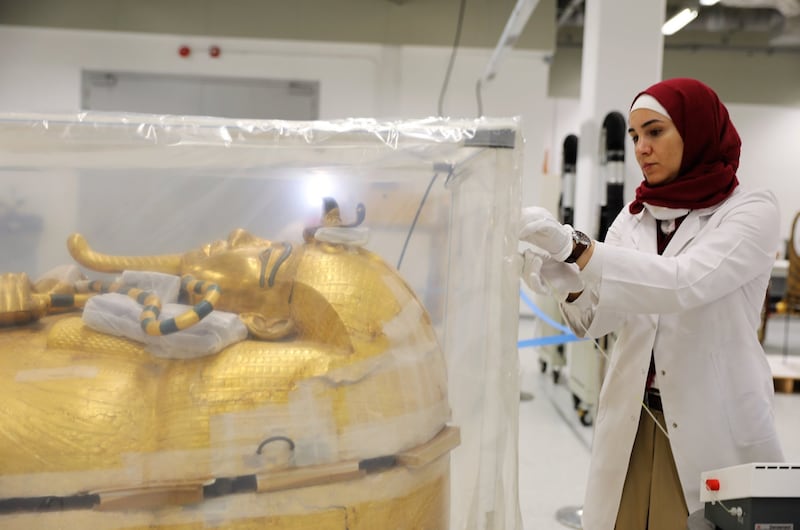Restoration work has begun on the 3,300-year-old tomb of Egyptian pharaoh Tutankhamun.
The gilded outer coffin has been removed from the king’s tomb for the first time since it was discovered in 1922 and it will take eight months to restore weaknesses in the plaster.
Tutankhamun, known as the “Golden Pharaoh”, was an 18th dynasty king who ruled from the age of eight to 19. He died in 1324BC and is best known for being the first royal tomb to be discovered almost entirely intact.
The Large Gilded Coffin of King TutankhamunTutankhamun, also known worldwide as the Golden Pharaoh, was an 18th…Posted by Ministry of Antiquities وزارة الآثار on Sunday, August 4, 2019
He was buried in the Valley of the Kings and discovered by British archaeologist Howard Carter in 1922. His tomb was filled with royal treasures, including a dagger made from meteorite.
His tomb contained three coffins nestled within one another. Shortly after it was discovered both the inner and middle caskets were transferred to the Egyptian Museum in Cairo, while the outer gilded coffin was left behind.
In July, the casket was removed in a tight security operation, and fumigated for seven days.

(Ministry of Antiquities, Egypt)
Restoration will now continue using non-invasive equipment. After mechanical and chemical engineering has taken place, any layers of plaster that have broken away will be replaced in their original location.
Once the work has been completed, the coffin will be on display in the Grand Egyptian Museum — the first time the three caskets have been displayed together since their discovery.
The innermost coffin is made of solid gold, while the middle coffin was made with gilded wood, inlaid with multi-coloured glass.








